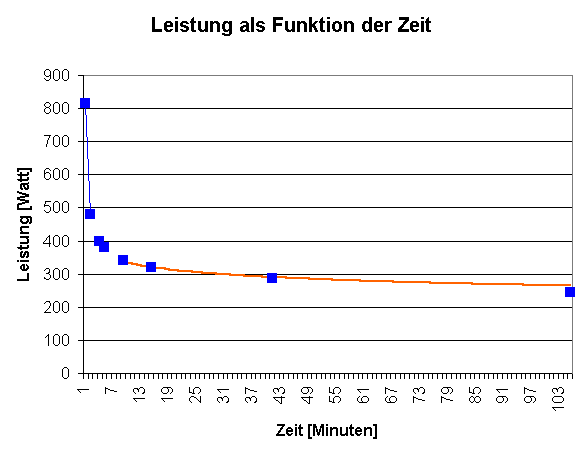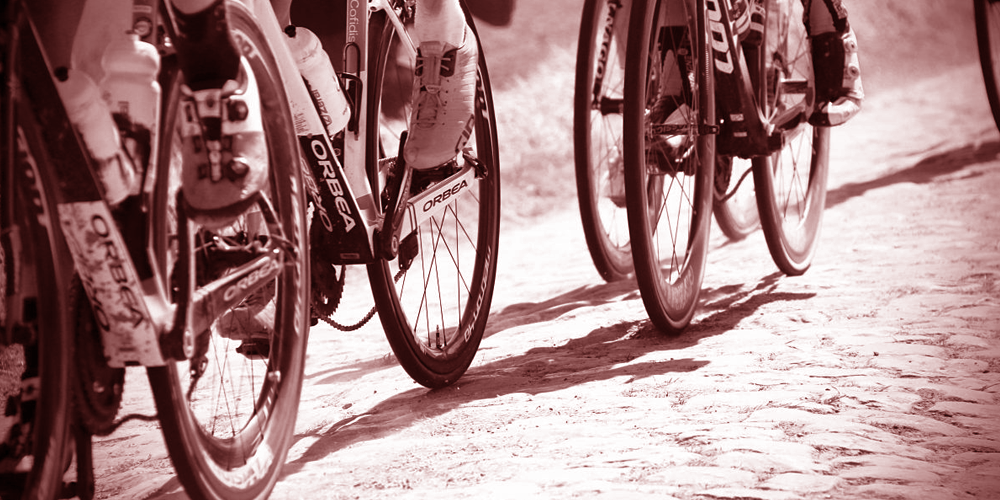It is common for athletes to define their fitness by average speed. However, since speed depends on a number of external factors in both running and cycling, an objective value is needed to give a meaningful indication of fitness level: power.
The level of the heart rate is indeed an indicator of physical exertion – but nothing more. Without classification, this statement is of little value. The same applies to the pace: uphill or flat with a tailwind? Alone or in a group? Often the documented average drops over the season because the routes and races become more demanding – but the performance increases. The average does not provide any information about the performance if it is not enriched with further information.
The goal of training is not to achieve the highest possible heart rates. No, the goal is to improve performance. The fact that heart rate has established itself as a performance indicator is due to the availability of measuring technology. Heart rate monitors are relatively inexpensive and therefore quite widespread. On the other hand, the direct measurement of power output can only be achieved using more complex and therefore more expensive equipment, which is in turn relatively rare. But it is given that the muscle work determines the workout intensity and the measured heart rate is only one of several indicators that reflect that intensity. Power measurement based on power data is no longer restricted to cyclists, there are now also suitable products for runners.
Other factors
Fuel
For the muscle to produce a certain amount of power, it needs to be nourished (“fueled”) and supplied with oxygen. The transportation system is provided by the blood stream. The quantity of oxygen that can be made available depends on the number of heartbeats (frequency) and the volume of the heart. Then other factors have an influence such as the oxygen saturation of the blood cells (hematocrit). The real pumping performance of the heart can therefore not be measured by the heart rate alone. In any case, the increased pumping action of the heart does reflect the increased muscle work during the exercise, but it is not the only cause. Sounds complex? Yes, it is, but it is also simple. In the end, it is only the output that matters.
Performance can be defined in scientifically exact terms. For a cyclist, this is the product of leg force times leg turnover (cadence) and is expressed in watts (watt = joule/seconds= energy per time unit). A small force times a high cadence can therefore equal a bigger force times a slower cadence. A good example is Lance Armstrong’s “spinning”-style. Lance produces a remarkable power output by multiplying a very high cadence with an average force. A rider like Jan Ullrich on the other side produces an identical performance by applying an average cadence to a remarkable force.
Power output is therefore the key to speed. Under the assumption that the external conditions remain unchanged (wind, gradient, riding position, etc.), only an increased power output leads to a faster speed when cycling. The best rider does not win, because he has the highest heart rate, the biggest oxygen intake, or pushes the biggest gear. He wins because in relation to his total system weight (rider + bike + all other equipment) and/or his system’s aerodynamic coefficient he expresses the highest power output. Exceptions to this rule are luckily very common and things such as tactics and other parameters influence a race outcome substantially. Good, then otherwise road racing could end up being pretty boring.
Even when running, the effect of power on speed is intuitively comprehensible.
Weight and Relative Power Output
Absolute power output itself misses the point as well. Only when power gets divided by the weight, you really get a relevant measurement, the power-to-weight ratio. The power-to-weight ratio defines how fast a cyclist can ride up a climb. The amplitude goes from 1 W/lbs (2 W/kg) to 14 W/lbs (7.2 W/Kg) for pro riders.
If we watch the pros, we can easily see how this correlation dictates the way they look: first, they train to achieve a maximum of force and then they try to lose as much weight as possible without losing leg strength. Since losing weight contributes to increasing the ratio. Before Bjarne Rjis succeeded in winning the Tour de France in 1996, he had to lose 11 lbs (5 Kg). Losing 5 to 10% of body weight is still easier than increasing the power output in the same range, especially when you already are at a very high level.
For runners, the same applies here as in the section above. Again, the influence of weight on climbing performance can be intuitively understood.
Aerodynamics
Like the power-to-weight ratio for a climber, the power-to-aerodynamic ratio is what matters most for a time trialist. This is a quotient as well: power divided by drag area (cwA). This value expresses how good the “engine” power output is in relation to the “bodywork” quality. An athlete who sits extremely aerodynamically on the bike rides much faster with the same power output. Riders who have a high power-to-weight ratio as well as a good power-to-aerodynamic ratio, are equally qualified for the flats as well as for the climbs.
The wind also affects runners. With a strong headwind, the speed is significantly lower for the same wattage than is the case in windless conditions. Modern power meters measure the influence of the wind and can therefore provide interesting data.
Equipment and Other
This is by no means an exhaustive list since there are countless of other variables. Depending on the age and the level of fitness these power-to-weight ratios differ significantly. With 2PEAK you can calculate and compare your power output with that of other athletes – and of course, you can filter age and volume to insure a peer-to-peer comparison. The equipment also plays a very small part, as the speed calculator shows us. With this you will get to starting line well-informed and with realistic expectations.
Measure power
By now it should be clear that power measurement is crucial in the pursuit of determining fitness improvements. Today the choice of measuring instruments is large. You can choose whether the power should be measured at the crank, at the hub or at the pedals. In addition, prices are still falling, for a few 100€/$ there is a reliable power measurement system available for cyclists or runners.
For runners, the power meters are for example available as clippers that can be attached to the running shoe. The analysis of the movement pattern is then converted into performance data in real time and sent to your watch.
The data can be downloaded on your computer and analyzed. With this, an objective analysis of the training intensities is achieved. This data can then be uploaded into the 2PEAK servers for further analysis and integration into your training plan.
These instruments are great for effectively keeping an eye on the training progress. Combined with 2PEAK they become even more meaningful. Since 2PEAK not only analyzes the past but also and more importantly defines, based on the acquired knowledge, how future training needs to be configured to allow for further fitness improvement. With 2PEAK the circle of performance improvement can be completed. The 2PEAK Apple Watch app enables training guidance by performance (visual, acoustic and haptic), and the mobile apps enable the manual creation of performance-based training and the export of these to Garmin Connect and the Apple Watch.
As an alternative 2PEAK offers what we call the MP-test (Maximum Power), or the climbing test on a longer climb. Both methods (MP-test and with power-meter) are based on the calculation of the hoisting capacity. The data that is needed therefore are: the system weight, the ascension in feet or meters and the time. All of which are relatively easy to be determined.
The MP test accomplishes the same as a power measurement device as far as being able to monitor fitness improvements, by simply providing an objective and accurate measurement clocking your effort on your favorite climb. If you want to improve your power output from say, 260 to 300 watts on your favorite climb (you can find out what this would mean in terms of a time gain using our speed calculator in the tools menu), you can easily use the MP-test to check your improvements. A systematic training approach with a power-measuring device will however be easier and allow you an ongoing insight into the way your body reacts to training.
Another difficulty around the theme power output measures is its dependence on the time factor. The actual effort that the human body generates is always a function of time: if the time increases the power output decreases. Especially for efforts under one minute, the power that can be generated depends dramatically on the time. This is due to the dominant aerobic component. This is also the zone that has no real correspondence with a heart rate measure (the heart rate lags the effort and can therefore not be used as an accurate indicator for it).
This is why 2PEAK defines the last training zone simply as the highest motivation zone. As time increases the aerobic component of the effort gains importance and so the output decreases slower over time: the 4 minute effort is closer to the 1 hour effort in terms of average power output then the one minute power output. The attached chart illustrates this correlation: Leistung als Funktion der Zeit (performance as a function of time).

The curve shows the power output drop of a well-trained athlete over time. Starting at the maximum 8 minutes output (MP8) the output drops by 7% with every doubling of the duration (red line). The gradient of the drop depends on the individual and his capacity to hold an effort for an extended period.
Targeted workout management with the help of power measurement
The power demands differ from race to race. A marathon or stage race requires excellent long-term endurance but very little anaerobic capacity or speed. This is very different if starting for an XC race, a criterium or a cyclocross race: if you want to be with the lead group, you need to be able to turn quite often in the “red zone” when climbing, cornering or sprinting. The talent required here is to get into a short-term oxygen dept and then recover during a short descent. Sprinters of course need explosive power bursts in order to leave the competition in the dust and time trialists need enormous aerobic capacities to be able to ride for long periods at the threshold. Everyone that can’t respond to attacks in the field because they lack explosiveness will be dropped and can pack up in a stage race.
These differences in competition, lead to different requirement profiles for training, without, which you’re not going to succeed. 2PEAK’s race planning takes these requirements into consideration and with its option to include the race profile into your training, it allows for an efficient and transparent method to systematically train for your individual objectives. Once defined the training zones as well as the intervals will be defined in watts per time units and can then document the training in watts as well. The training can therefore be managed directly from the source and the improvements can be seen instantly.
